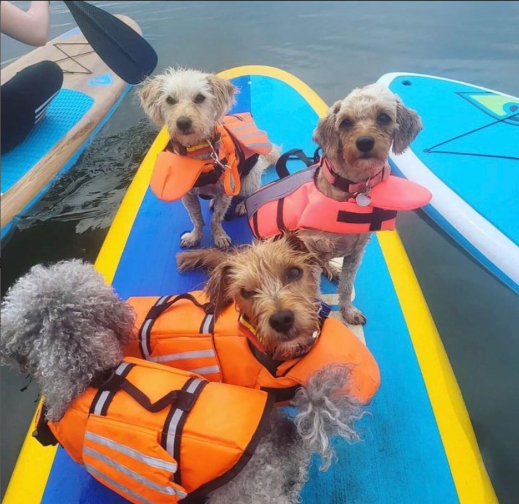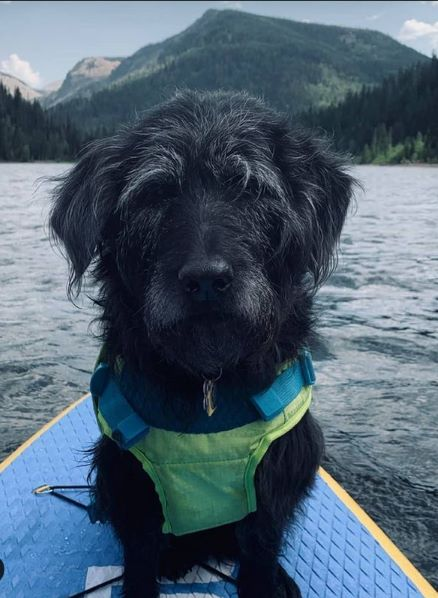
Paddle boarding with your dog can be an incredibly fun and rewarding experience, offering both you and your furry companion a great way to enjoy the outdoors. Whether you're a seasoned paddleboarder or just starting out, this ultimate guide provides you with essential tips, tricks, and gear recommendations to ensure a safe and enjoyable adventure for both you and your dog.
Choosing the Right Paddle Board
When selecting a paddle board for activities with your dog, consider the following key factors:
-
Stability: Opt for a board that's wide and stable to ensure it can comfortably support both your weight and your dog’s, especially as they move around.
-
Size: The board should have enough space for both of you to sit or stand comfortably. For larger dogs, a longer board may be necessary.
-
Durability: Since dog nails can be sharp, it’s crucial to choose a paddleboard that can withstand scratches. Inflatable paddleboards are often made from durable materials that resist punctures and damage, making them a great choice.
Preparing Your Dog for Paddle Boarding
Before you hit the water, prepare your dog for the experience:
-
Board Familiarization: Introduce your dog to the paddleboard on dry land first. Let them explore and get comfortable with the board.
-
Command Training: Ensure your dog is responsive to basic commands such as "sit," "stay," and "come," which can help maintain control on the water.
-
Water Comfort: Gradually introduce your dog to water if they aren’t already familiar with it. Start with shallow, calm waters before progressing to deeper areas.
-
Swimming Skills: Confirm that your dog can swim well. For dogs that are less confident swimmers, a dog life jacket is essential for safety.
Essential Gear for Paddle Boarding with Your Dog

To ensure a smooth paddle boarding experience, equip yourself with the right gear:
-
Dog Life Jacket: This is vital for safety, providing buoyancy and making it easier to lift your dog back onto the board if necessary. Choose a jacket with a handle on top.
-
Non-Slip Deck Pad: Enhance your dog's stability on the board with a non-slip pad. This can be a specially designed paddleboard mat or a simple yoga mat.
-
Leash: Consider a long, retractable leash for added security, especially in busier waters or if your dog tends to jump off.
-
Dry Bag: Keep essentials like your keys, phone, and dog treats dry and secure in a dry bag.
-
Sun Protection: Protect your dog from the sun with pet-safe sunscreen, particularly on exposed areas like the nose and ears.
Tips for a Successful Outing
Maximize the fun by keeping these tips in mind:
-
Start in Calm Waters: Begin your paddle boarding adventures in calm, shallow water to help your dog gain confidence.
-
Boarding Techniques: Help your dog onto the board first, then stabilize the board as you get on. Teach them to sit or lie down to lower the center of gravity.
-
Maintain Balance: Keep your knees slightly bent and your weight centered on the board. Adjust your stance as needed to accommodate your dog’s movements.
-
Take Breaks: Allow for plenty of breaks, especially on longer outings, so your dog can swim and explore.
-
Positive Reinforcement: Use treats and praise to encourage good behavior and make the experience enjoyable for your dog.
Safety First
Always prioritize safety by adhering to these guidelines:
-
Wear PFDs: Both you and your dog should wear a personal flotation device (PFD) at all times on the water.
-
Monitor Weather Conditions: Check the weather before you head out and avoid paddleboarding during adverse conditions.
-
Be Aware of Surroundings: Keep a lookout for other water users and potential hazards in the water.
-
Stay Hydrated: Bring along fresh water for both you and your dog to prevent dehydration.
-
Emergency Preparedness: Carry a whistle or other signaling device in case of emergencies.
Creating Memorable Moments

Paddle boarding with your dog not only strengthens your bond but also provides a fantastic workout and mental stimulation for your pet. With the right preparation and equipment, every trip to the water can be a joyful and memorable adventure.
Dog Friendly Paddle Board Recommendations
For dog-friendly boards, consider the Glide Lotus, known for its stability and space, making it perfect for outings with your dog. Alternatively, the Glide O2 Angler offers a robust platform for longer excursions or if you plan to fish while paddle boarding.
By following this comprehensive guide, you and your dog are set for many exciting paddle boarding adventures, combining fitness with the joy of exploring nature together.





